We rarely hear about how much energy buildings consume… It seems that only cars and plants are polluting the world in the media. And yet, in 2018, 40% of the total consumption of energy in the USA was for buildings. But an interesting phenomenon recently emerged: net zero energy buildings! Nowadays architects and builders have the knowledge and the means to do such buildings! Former buildings can be retrofitted to be net zero energy too. But not enough existing buildings are retrofitted! That’s why I will show how you could disrupt the net zero retrofit building industry to change the game!
Let’s give some facts.
As mentioned above, buildings consume a lot of energy. As a consequence, buildings produce a lot of indirect pollution. Indeed, coal plants produces a lot of CO2 and nuclear plants a lot of wastes we do not know how to get rid of. Sometimes, a building pollutes directly too, if it has a fuel or a gas heating system.
Utility companies around the world are already struggling to produce enough energy to meet the actual demand. Some countries borrow energy each other by fear of lack (it is the case in the EU). There have been many blackouts in the past here and there due to a lack of energy. Unfortunately, states often answer to this by building new coal plants or by maintaining risky nuclear plants beyond a reasonable time limit.
This is not to mention that, in the meantime, the world population is growing year after year.

More people on earth means more houses, more schools, more hospitals and so on. But can we afford that? It seems that this goes in the wrong direction. Except if we change the paradigm!
The solution is to disconnect from the grid.
Our buildings rely on the grid to get the energy it needs. This energy seems unlimited to us and without consequences. That’s why we do not particularly pay attention to it. And yet it has tremendous indirect consequences! One simple way to stop that is to disconnect from the grid. This means learning how to generate the energy you need on site. Fortunately this is possible today. A building producing on site all the energy it needs yearly is called a net zero building. Nowadays, architects and builders know how to design and build net zero buildings.
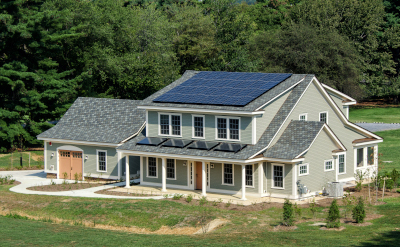
Although the upfront cost is higher than the upfront cost of a traditional building, the overall cost is now similar! As a net zero house owner, you will have no utility bills. You may even get money from utility companies or your municipality if you are net zero positive. Zero-positive means you can produce more energy than you need. And there is a chance that you will make a bigger plus-value when selling your house. As you can see, there are no reasons why new buildings are not all net zero.
But what about the old buildings we already have? Do we have to wait until they are all destroyed 30, 40 or 50 years later? Fortunately no! We can retrofit them to make them net zero.
But how to prepare a retrofit?
One of the first thing to know is how much energy the building consumed over the past year. You will need a year’s worth of utility bills for that. Then, you have to estimate the R-value of the actual insulation. The R-value indicates the resistance to the passage of heat and cold. You also have to estimate the U-value of the windows and the doors. The U-value indicates the heat loss rate. The structure of the building must be inspected too, using a thermal camera. In this way you can detect potential humidity spots or cracks. With all these information you have a good estimation of the work you have to do.
The energy efficiency and appliances of the water heaters and the heating and cooling system should be inspected. What consumes too much energy should be replaced. Conventional light bulbs should be replaced by LED light bulbs for a greater energy saving. It may also be useful to give some tips and recommendations to change the habits of the building’s inhabitants. Installing a socket power switch in each room to shut down everything at once is also a good idea.
How to perform a retrofit?
The first retrofit step is to build a good net zero envelop of the building. This means adding insulation to meet more strict standards. Depending on the project, insulation can be added inside the walls or outside the walls. The ground, the ceilings and the roof must be properly insulated too! Depending on the location of the building the recommended R-value of the insulation may change. The windows and the doors having a too high U-value should be replaced by new ones with low U-values. At this stage it is also a good idea to add insulated honeycomb shades.
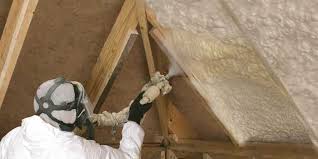
The third step is the air sealing of the envelop. Air leaks can be found inside the building using the blower door test. With this test the inside pressure of the building is decreased using a ventilation system chasing the air outside. The difference of pressure makes it easy to find leaks. So they can be plugged one after the other. This is ambitious: lowering the pressure at 50 pascal and get only two air changes per hour!
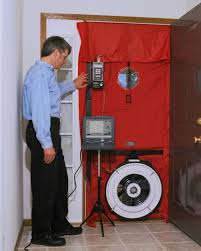
The final step is adding a source of energy! A big enough south facing array of solar panels must be installed on the roof. A backup battery must be installed too, in case the weather conditions are not good. Note that another source of energy can be used instead of solar panels, such as a geothermal heat pump.
And voila! The building can finally be disconnected from the grid!
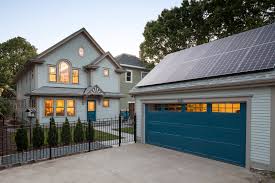
But why everybody is not doing it right now?
There might be several reasons for that. One of the most obvious reason might be that people don’t know it‘s possible to retrofit a building. Besides, there are probably not enough professionals mastering the art of retrofitting to net zero. But actually, the biggest problem is the cost, it is still too prohibitive for many. This industry definitively need to be disrupted! The greater goal here is to enable mass adoption of retrofitting techniques around the world. Below I will show you where to start to disrupt the net zero retrofit building industry!
Let’s have a look to a use-case first. We will see that this can be easily generalized to other retrofit net zero use-cases.
Look at this pretty 700 square meter house:
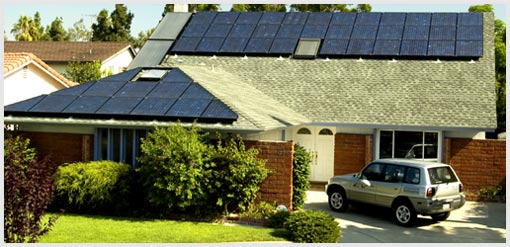
The total cost to retrofit this house was 61,500 dollars (without the tax incentives). The photovoltaic (P.V) system of this house cost 36,000 dollars. More than half of the total price! And this is the biggest expenditure item. The second biggest expenditure item was the dual-panel low U-value windows. This cost about 10,000 dollars. And the third biggest expenditure item was a heat pump/HVAC system for a cost of 4,200 dollars.
And we can see the same thing on other retrofit net zero projects disrupt the net zero retrofit. The biggest expenditure items are often: the P.V system, the low U-value windows, the heat pumps and the HVAC systems. If it’s less costly then more people will join the retrofitted club!
Where to start to disrupt the net zero retrofit building industry?
Currently there are two ways to get your solar panels. You can purchase them by yourself, and it will be very costly. Fortunately, some countries offer tax incentives to help you a little bit on that. Or you can get a leasing, if you cannot pay upfront. Every month you will pay a rent to use the solar panels.
You could create a new kind of leasing business to completely disrupt the market. Look at what these companies currently offer and try to beat them with new technologies. Like all startups try to do.
What about the windows? Replacing all the old windows with new low U-value ones is also very costly! But is it always necessary to replace these windows? Why not keeping the old ones and upgrade them to be more insulated instead? The price, for sure, will be less. In 2019, researchers developed a coating thin film made of chlorophyll. With this thin film a single-pane non-coated window can get a low U-value. Actually the U-value obtained is less than the minimum recommended to get a Energy Star certification for the cold regions of the USA! That’s impressive! This film, or a similar one, could be mass produced and sell to everyone.
New heat pump designs, such as the dual source heat pump design, can be less costly.
Inspecting the structure and performing the blower door test can be time consuming. Why not develop new ways to fasten these things? You could develop a solution to scan the structure of the building using small UAVs equipped with thermal cameras. Small UAVs could also help finding the air-leaks when performing the blower door test. There are definitively a lot of things to improve here!
To conclude.
Having more net zero buildings is a necessity for our world. And we cannot wait until all the existing buildings are destroyed to build new net zero ones. Existing buildings should be retrofitted to be net zero. They should be disconnected from the grid and produce the sustainable energy they need on site. The goal is to stop polluting directly or indirectly our world with our buildings. But the costs are still too prohibitive. And that’s where you can change the game with your company! Disrupt this market by lowering the prices down so that more buildings can be retrofitted tomorrow!
I would be happy to read your suggestions in the comments to make this article more useful for you! And if you notice a dead link or an outdated information, please let me know!
See you!


